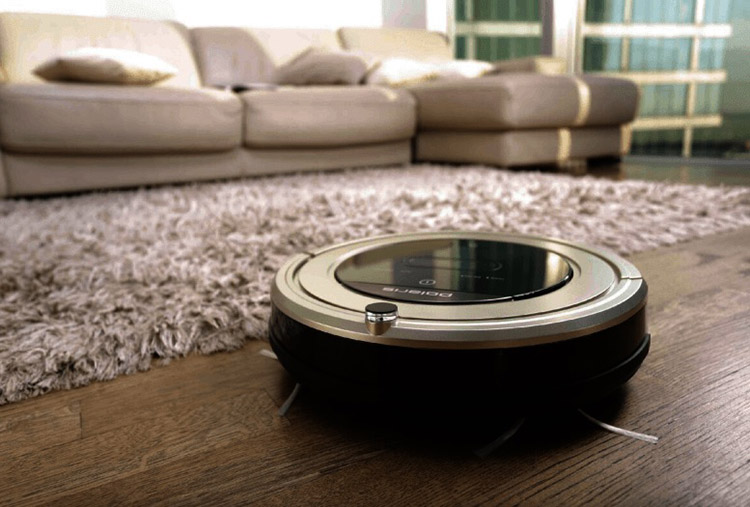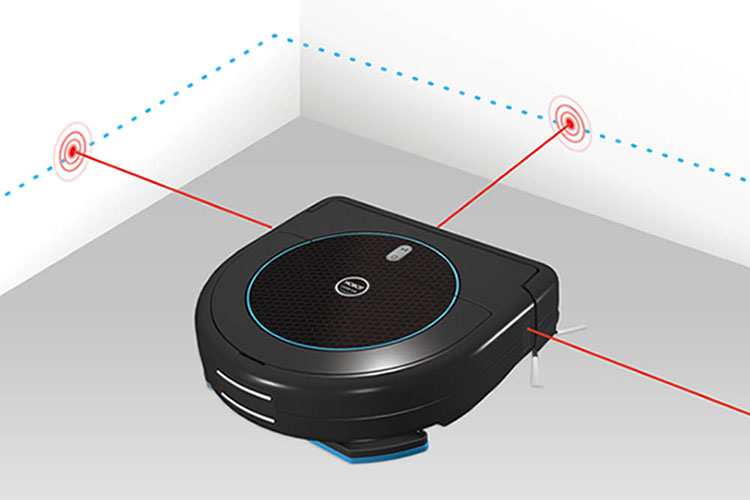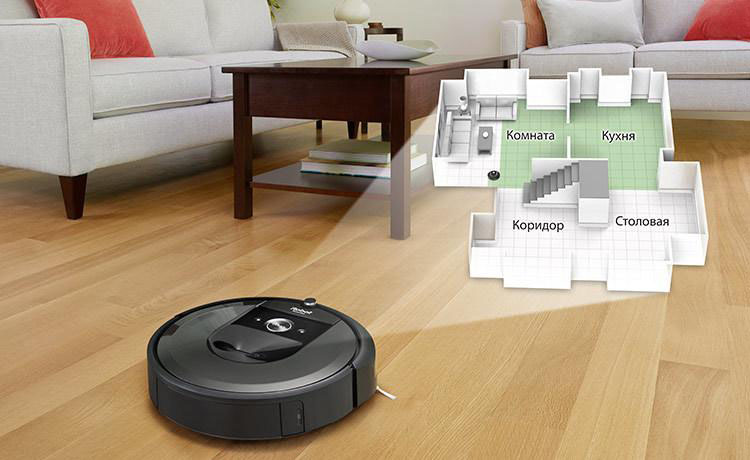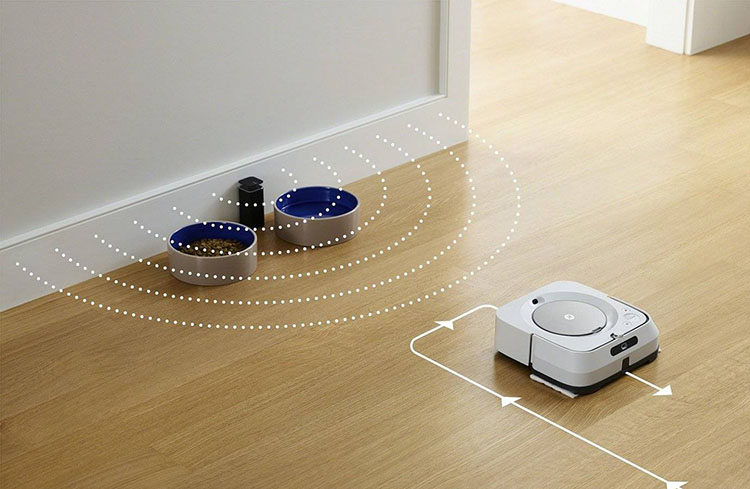We understand how the robot vacuum cleaner works: the principle of operation and an overview of useful functions
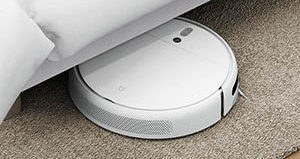 Traditional vacuum cleaners are gradually becoming a thing of the past, and to replace them, manufacturers offer robotic vacuum cleaners that clean autonomously, without human intervention.
Traditional vacuum cleaners are gradually becoming a thing of the past, and to replace them, manufacturers offer robotic vacuum cleaners that clean autonomously, without human intervention.
But what is the principle of their work?
And what features are provided with modern Xiaomi robotic vacuum cleaners?
Content
Varieties of robotic vacuum cleaners
Conventionally, there are two variations of robotic vacuum cleaners:
- For dry cleaning. They are supplied with a set of brushes (“panicles”, “turbo brush”), as well as a suction mechanism.
- For wet cleaning. Structurally the same, but they also have a nozzle for supplying cleaning fluid with water, as well as a completely sealed housing, which prevents moisture from entering the electric motor and electronics.
For dry cleaning
Most of the robotic vacuum cleaners offered for purchase fall into this category. Great for regular cleaning of houses and apartments without carpets (or with carpets, but with a small pile, less than 5 millimeters).
Their advantages:
- battery life (the less functionality, the longer the device works on one full charge of the battery);
- simple maintenance (it is enough just to clean the container, replace the brushes and the filter in a timely manner).
For wet cleaning
More advanced models of robotic vacuum cleaners are equipped with a “wet” cleaning function. That is, a nozzle was added that supplies a mixture of water and washing liquid, a sponge that removes the remnants of wet dirt, as well as sealed containers (where liquids are stored).
Naturally, such robotic vacuum cleaners can also be used only for dry cleaning.
The principle of operation of robotic vacuum cleaners
The basis of such a robot, like a conventional vacuum cleaner, is an electric motor that creates reverse thrust. But this is complemented by a set of sensors, a gyroscope and an accelerometer.
All this is necessary so that the robot does not collide with obstacles, and can also overcome some of them without tipping over (high thresholds, steps).
Also, every modern robot vacuum cleaner has a digital control unit. In fact, this is a mini-computer with a WiFi or Bluetooth wireless module installed. With their help, the device can be synchronized with a smartphone and make all the necessary settings or get service information (charge level, container fullness, and so on).
Vacuum cleaner robot device
Any model of a robot vacuum cleaner consists of the following components:
- Frame.
- Swivel wheels.
- Brush set.
- Garbage container.
- Charging station.
- In models with wet cleaning support, there are also: a liquid reservoir, a platform with a sponge (napkin).
- A set of sensors.
Frame
The case is always made of plastic, since in the production of robotic vacuum cleaners it is important to minimize their weight so that a minimum of energy is expended during its autonomous movement around the house. Necessarily sealed, most often manufacturers use silicone or rubber seals when assembling such equipment.
In models with "wet cleaning" support, the engine itself is also additionally protected from moisture.
On the side of the case, there are usually 4-6 proximity sensors (laser or optical), visually similar to camera modules in smartphones.
wheels
Mounted on swivel joints, which ensures the mobility of the robot.
As a rule, there are 4 of them, they have rubber inserts that prevent scratching the flooring.
Brush set
In modern robotic vacuum cleaners, 2 variations of brushes are mainly used:
- petal (sweep away all the debris in the path of the device towards the turbo brush or sponge for wet cleaning);
- turbo brush (located at the bottom, rotates during operation, thereby picking up all the debris from the floor).
The brushes must be replaced. Many manufacturers add a few spares to the basic kit, as they are consumables.
It is recommended to change the brushes once every 6-12 months (depending on the frequency of cleaning).
Garbage container
It is installed between the engine and the filter. But at the same time, direct access is provided to it (usually from above, behind a special plug) in order to be able to quickly clear the container of debris.
Made from impact resistant plastic. Volume - from 0.5 to 1.2 liters (on average).
Charging station
At the bottom or side of the robot vacuum cleaner there is a contact pad for charging (often recessed into the body, which prevents damage, moisture and dirt).
After cleaning is completed, the robot drives itself onto the charging platform, which is connected to the household power supply.
Liquid reservoir
Mostly placed on top behind a hinged lid, made of ABS plastic. At the bottom there is a valve for connection with the nozzle (automatically closes when removed).
sponge platform
It is removable, it is installed only as needed (for wet cleaning).
The sponge itself is replaceable, made of microfiber.
Sensor set
Robot vacuum cleaners use 3 main sensor options:
- Optical. With their help, the technique “understands” when it approaches an obstacle and goes around them. There are simple and laser.
- Ultrasonic. They are used to detect doorways, narrow spaces. It is these sensors that allow the robot vacuum cleaner to determine whether the height of the bottom edge of the furniture is enough for them to clean from below.
- infrared. Used as height difference sensors. With their help, the robot detects on the way those obstacles that are not an obstacle for it (wires, edges of carpets, thresholds). They also help to determine the presence of a high step.
Additional functions of robotic vacuum cleaners
Modern models are equipped with a whole range of additional functions.
The main ones are:
- building an interactive map of the premises;
- scheduled cleaning;
- automatic return to the docking station for recharging;
- smartphone control;
- "virtual wall" function.
Building an interactive map of the premises
Information from optical and other sensors is recorded in the control unit. And on its basis, a conditional map of the premises is created. That is, the robot vacuum cleaner literally “remembers” where obstacles, walls, thresholds are located.
All this is necessary in order to make the next cleaning faster, as well as reduce the likelihood of tipping over, collision with walls.
Scheduled cleaning
There is no need to clean the house every day. In most cases, this is done only 1 - 2 times a week. And robotic vacuum cleaners allow you to create a schedule according to which they will automatically clean the house.
In addition to this, synchronization via the Internet is also supported.
Automatic return to charging dock
On average, the battery life of robotic vacuum cleaners is between 90 and 150 minutes.
This may not be enough to clean the entire room. Therefore, in such devices, a charge level controller is necessarily integrated. And as soon as less than 10-15% of the battery capacity remains, the robot is automatically sent to the docking station for charging.
Due to the "interactive map" function, the technician understands exactly where it is located.
After charging is completed, cleaning automatically resumes from where it left off. And all this is done without human intervention.
That is why robotic vacuum cleaners are compact, they do not need a huge battery, but at the same time they are suitable for cleaning residential areas up to 300 m2.
Smartphone control
On the body of the robot there are only 3 - 4 buttons for manual control. With their help, you can set the cleaning mode, force the device to be charged, turn it off.
All other settings are set through a proprietary mobile application (the link to download it is indicated in the technical documentation).
Function "virtual wall"
The data of the compiled interactive map is downloaded to the smartphone of the owner of the robot vacuum cleaner. And through it you can specify those areas where cleaning will not be performed.
This is useful, for example, to go around the floor vases placed in the room, which the robot can push or even overturn.
In most robots, laser rangefinders are responsible for this function.
In older robotic vacuum cleaners, this function was implemented a little differently:
- using infrared sensors. They were placed near the place where cleaning was not allowed.
- With magnetic tape. In the robot itself, a sensor was installed that reads the change in the magnetic field. And as soon as he approached the tape glued to the floor, he went around it.
Advantages and disadvantages of robotic vacuum cleaners
The following advantages of robot vacuum cleaners can be distinguished:
- Cleaning is done autonomously. Human intervention is only necessary to complete the initial setup of the device.
- Suitable for both dry and wet cleaning.
- The robot can be launched remotely from anywhere in the world.
- Consumables are inexpensive, you can buy them at any hardware store. And most manufacturers produce universal replacement brushes, filters, sponges. That is, they are suitable for a whole line of vacuum cleaners, and not a single model.
- Dimensions. The robot is 4-5 times smaller than a traditional vacuum cleaner. They also have an attractive design that fits into the interior of any living space.
- Virtually no sound during operation.
But this technique also has disadvantages. The following disadvantages can be distinguished:
- Price. Flagship models will cost 50 thousand rubles or more. The simplest - from 8 - 10 thousand. For this money you can take 2 "classic" simple vacuum cleaners.
- The quality of cleaning is lower. Judging by user reviews, this is especially noticeable in the corners, next to furniture legs. Periodically, these places have to be cleaned manually.
- Suction power is lower. In a traditional vacuum cleaner, the motor consumes up to 2.5 kW of electricity, and all of it is converted into reverse thrust. In robots, the motor has a power of up to 250 watts. Therefore, they are practically not suitable for cleaning high-pile carpets.
In total, cleaning with a robot vacuum cleaner is really convenient. They also have disadvantages, but manufacturers are constantly upgrading their design.
It is expected that within the next 5 to 10 years, classic vacuum cleaners will completely disappear from store shelves.
Useful video
Want to see how a robotic vacuum cleaner works? Watch the video, which will tell you about the device and the principle of operation of this device using the example of the Xiaomi Mi Robot Vacuum model:



